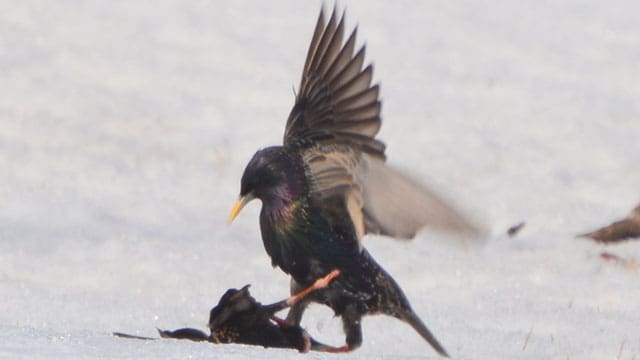From territorial disputes to mating rituals, nature’s drama unfolds before our eyes
 The current state of the world has brought about notable changes. The usual hustle and bustle have given way to a serene atmosphere that defines our new reality. Many embrace this period as an opportunity for reflection, learning, and gratitude for life and its blessings. More people are seeking solace in nature than ever before.
The current state of the world has brought about notable changes. The usual hustle and bustle have given way to a serene atmosphere that defines our new reality. Many embrace this period as an opportunity for reflection, learning, and gratitude for life and its blessings. More people are seeking solace in nature than ever before.
With your permission, I’d like to share some insights into the current happenings in the natural world.
I love this time of year because everything is awakening and starting afresh – plants and animals alike. The reasons are clear for the most part. The long winter has passed, and life needs to get on with it. Plants need to grow, set seeds, and propagate. Insects need to emerge and complete their development to adulthood or pick up where they left off last year. For the larger animals, it’s all about reproduction. Singing and courting are rampant.
But have you noticed a lot of chasing going on? What’s that all about?
 The dominant male makes his points |
| More Nature in a Nutshell |
| How Dark-eyed Juncos outsmart other birds for food
|
| Nature is gearing up for another spring
|
| Tips for setting up your bird feeders
|
Male birds of all species begin displaying their songs immediately upon returning from their winter habitats. The urge to sing is primarily influenced by the length of the day. As the earth gradually tilts and the sun moves northward, singing begins and becomes more pronounced as the season advances.
But coupled with this is an urge to drive other birds of the same species away. The strongest males spend a great deal of time chasing weaker ones.
Why bother if you’re stronger anyway? Well, if you let your guard down, a lower-status male may sneak in and mate with a prime female. The better the genes, the better the likelihood that the species will remain genetically strong, so it makes sense to expend effort to drive off weaker males.
We see this not only in birds but also in mammals. The other day, I watched a black squirrel chasing two other squirrels. He chased one across the yard and back again until he drove the interloper off. As quickly as the conflict arose, it ended, and the two fed side by side.
Why did the dominant male now tolerate the weaker one? First, the stronger one ‘made his point,’ but more likely, it was about food. If you’re going to stay strong, you must eat, so rivalries are briefly forgotten as they feed.
The same dominant male then chased another squirrel, but his intentions were clearly different this time. He rushed at her, then veered away, approached from behind, and checked out her ‘aura’ to see if she was receptive. After a few more attempts to attract her, he rushed in and mated – with her silent consent.
With birds, the chases can be very aggressive and even can cause injury. Often, at this time of year, two rival males will feed peacefully on the lawn one moment, and the next will be locked in a savage battle.
Several times this week, I watched two male starlings suddenly face off, uttering threatening calls and then flying skyward with wings and feet intertwined. When they eventually landed, the fight ended abruptly, but one of the two seemed more subdued. The outcome for the starlings was clear – the dominant male showed the subordinate one who was the boss.
Whatever the species, male birds often briefly attack a female nearby. This is puzzling, as it seems he should welcome her. Could it be that his hormones are so high that he just needs to show his strength by dominating anything nearby? He then quickly resumes his gentler approach to the local females in the hopes of securing a mate!
So here we see various stimuli at play. It is typically brief and orchestrated by the female. Once she is prepared, they may mate.
Chases initiated by males are invariably for territorial dominance, ensuring that any receptive female passing by will be exclusive to the dominant male.
There’s so much to see out there. Now you have the time!
Geoff Carpentier is a published author, expedition guide and environmental consultant.
For interview requests, click here.
The opinions expressed by our columnists and contributors are theirs alone and do not inherently or expressly reflect the views of our publication.
© Troy Media
Troy Media is an editorial content provider to media outlets and its own hosted community news outlets across Canada.

